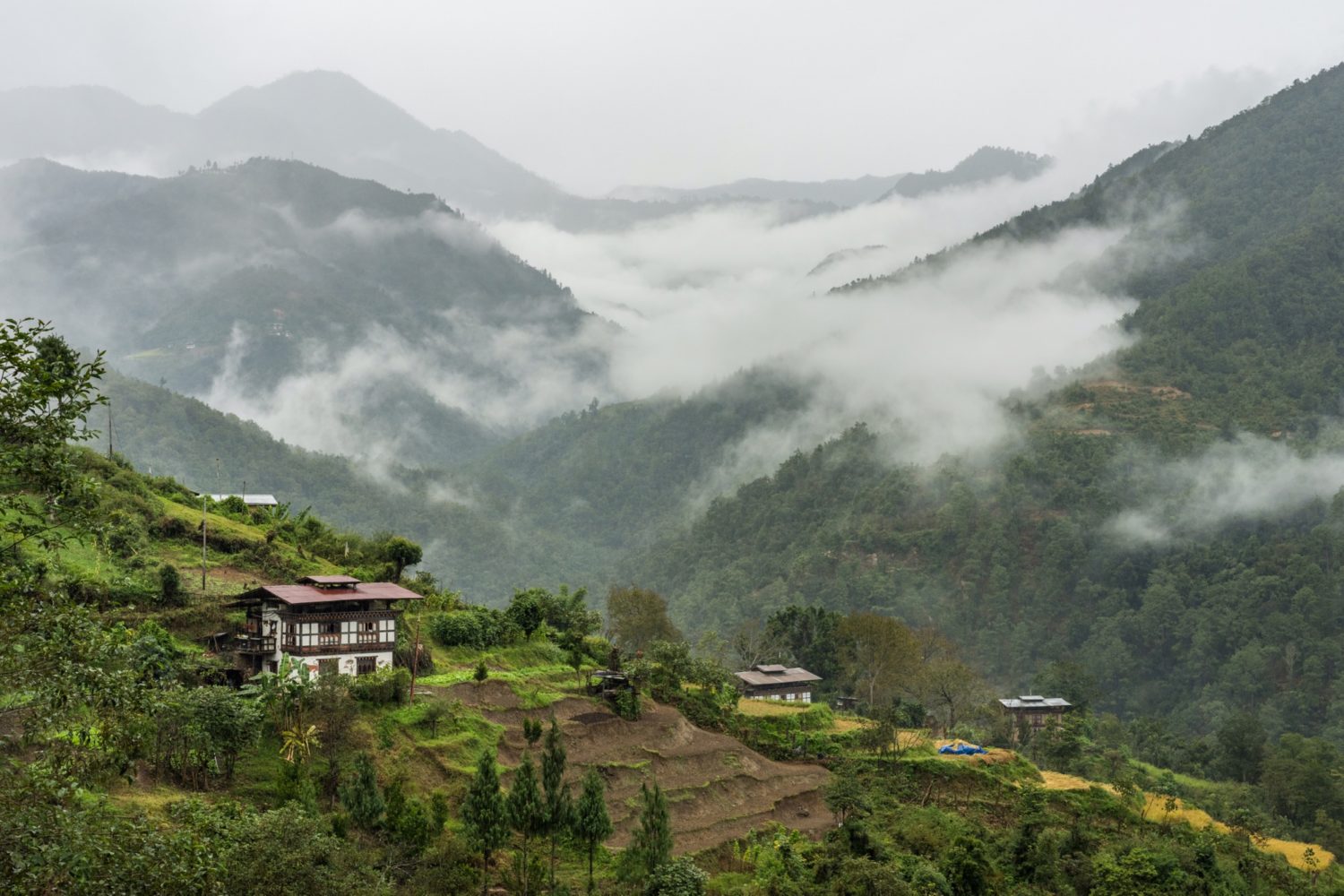
Enveloped in mist and mystique, Bhutan is a tiny Buddhist nation wedged between India and China which has long enchanted travellers. Hemmed in by mountains creating natural roadblocks and access difficulties, it was once dubbed the forbidden kingdom. Now, Bhutan has opened up to the world – albeit with a strict tourism strategy – giving visitors a glimpse of its remote agrarian communities, ancient spiritual practices and cherished values of compassion and happiness. With a new luxury hotel just opened in its lush Punakha valley, here’s our guide to a week in western Bhutan.
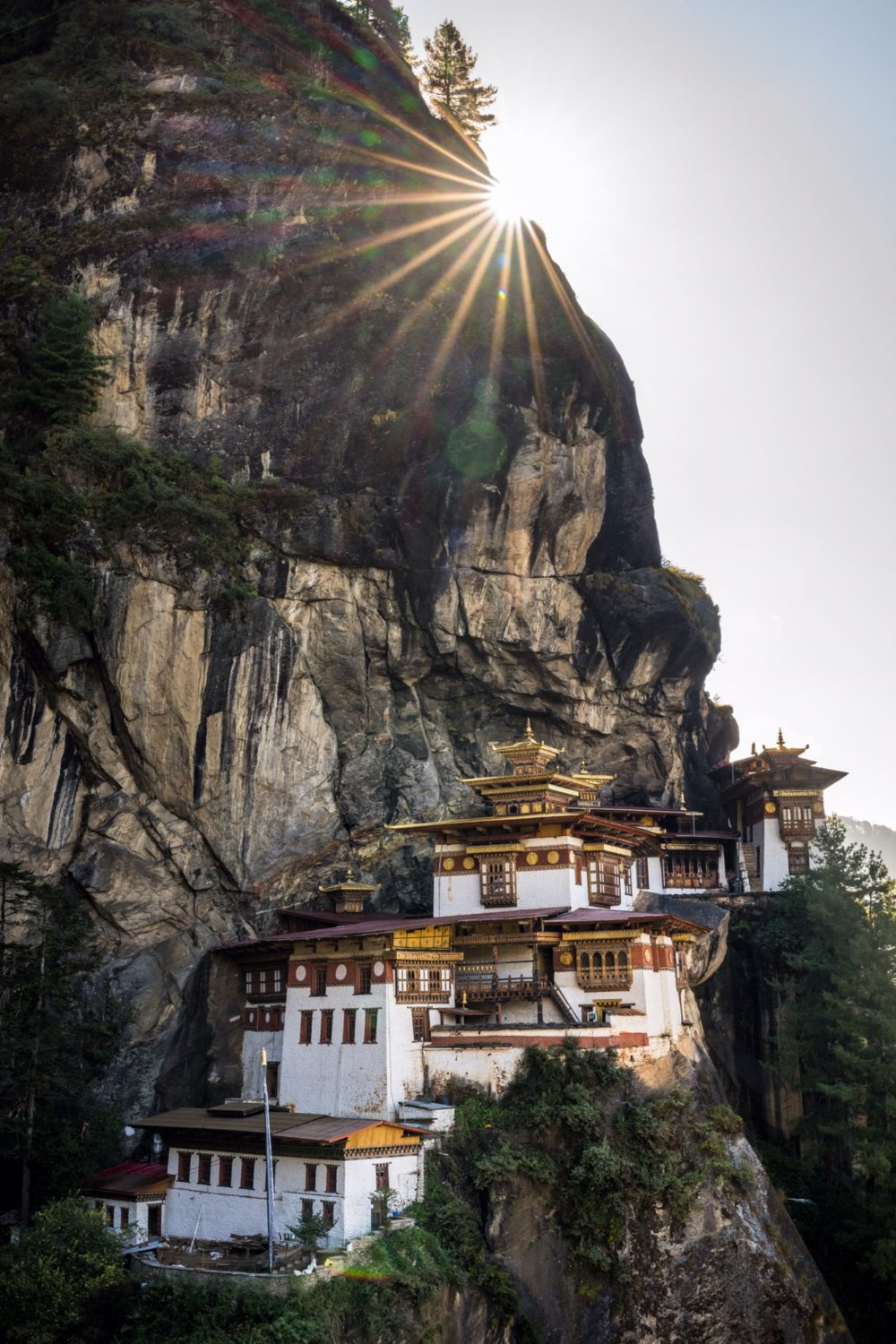
Paro: The gateway to Bhutan
If arriving by air, travellers will enter Bhutan via Paro Airport. The descent through the mountain valley is hair-raising as you glide past monasteries on plateaus with fluttering prayer flags that seem close enough to touch. The lavishly decorated and blissfully quiet airport is a bureaucratic breeze so it’s not long before you step out into the fresh pure air of Paro, Bhutan’s second city. It delights with streets of low, vernacular architecture, walls painted with auspicious symbols of dragons and shop fronts of rainbow-coloured carved wood lintels.
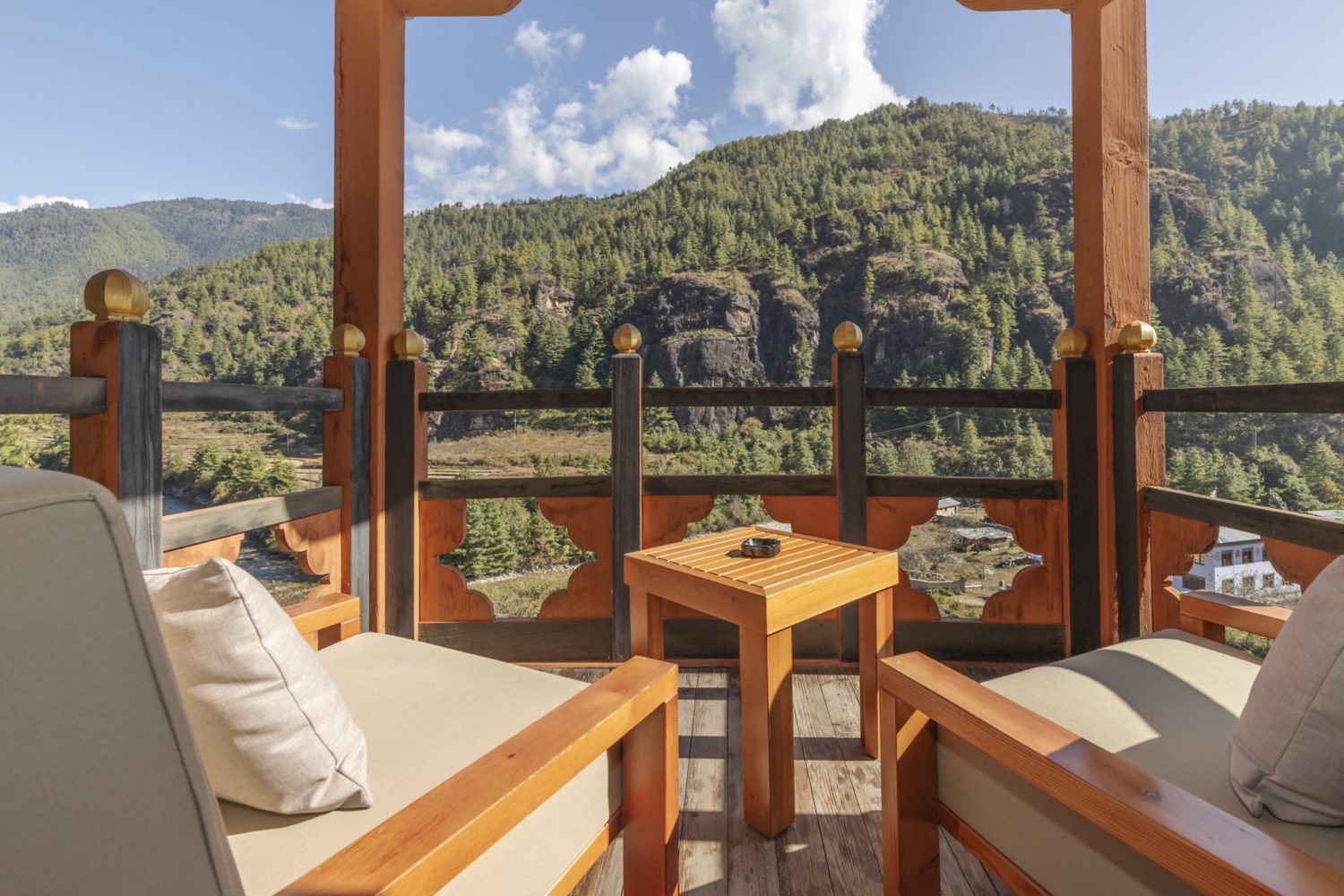
On a hillside above the city, the fabled Tiger’s Nest monastery clings to a cliff edge. This 17th-century religious complex at the summit of a three-hour walking trail is one of Bhutan’s most famed attractions. The path climbs through misty pine forest and past a burbling stream whose water flow turns a painted prayer wheel which clangs a bell on each rotation. The high altitude, lung-busting route stops at a glass-walled cafè whose balcony affords a tantalising view of the white-washed monastery squeezed on a rocky ridge.
The Escher-esque complex houses seven glittering shines adorned with meditative, instructive or wrathful deities. The altars shimmer with giant golden Buddhas riding ferocious snow lions or contemplating cross-legged on a lotus flower.
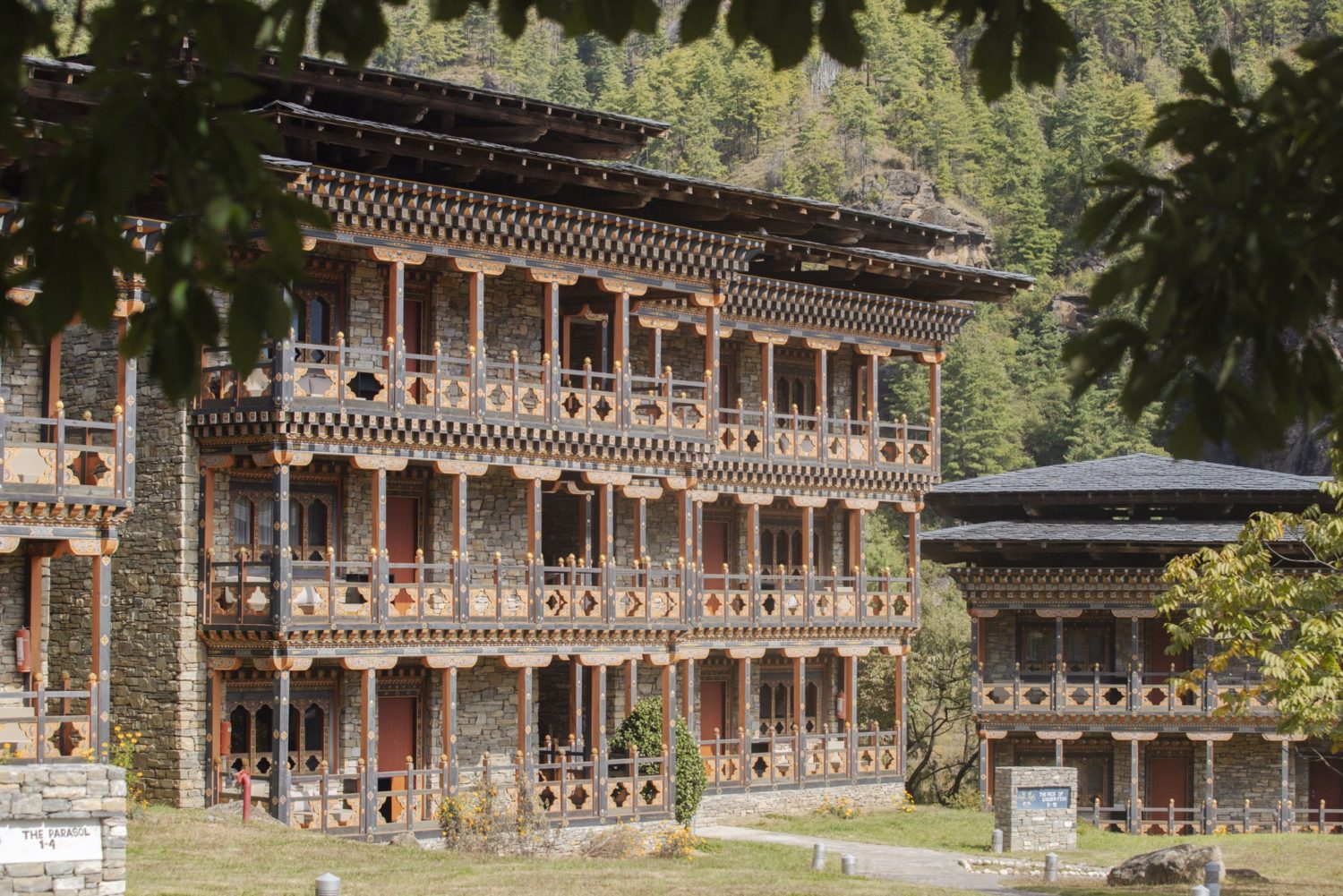
Where to stay in Paro
Upon entering the five-star Zhiwaling Heritage Hotel, you’ll likely spend the first few minutes gazing upwards. The 80s building is a maximalist interpretation of Bhutanese architecture with upper floors open to the wide central lobby all constructed in colourful, elaborately carved wood.
The all-Bhutanese staff conduct impromptu tours of the property which is somewhere between an upscale design home and a museum. There are historic objects artfully placed on the soft cream carpet like a ceremonial chair and a worn wooden ladder from a traditional rural house. Their in-house shine features 16th-century painted beams and columns and walls painted with scenes from the life of the second Buddha. On the grounds, there’s also a yoga studio, wood stove-heated library and swimming pool.
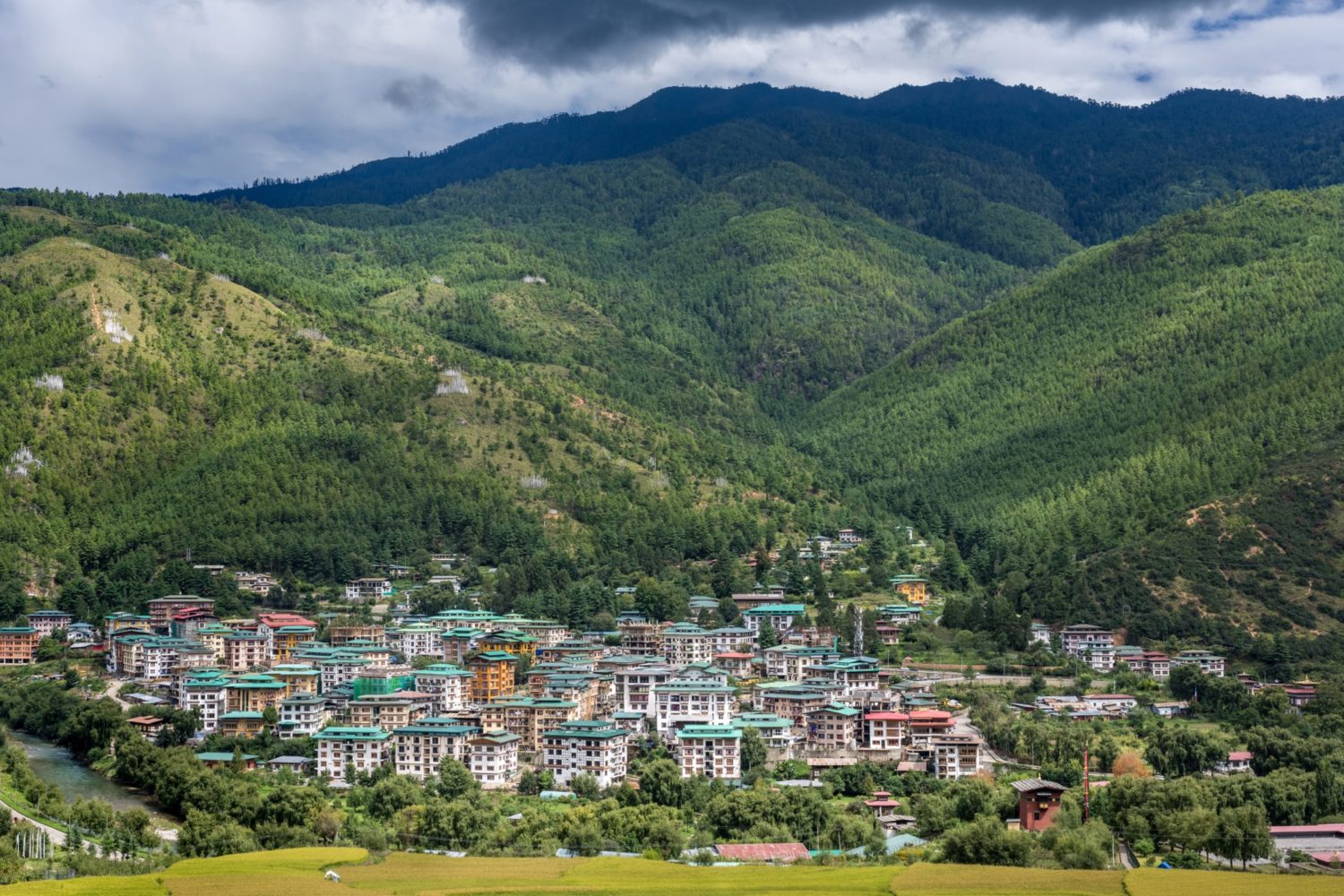
Thimphu: The 5th highest capital in the world
The mountainous scenery around Bhutan’s capital Thimphu has a dizzying majesty, though that might also be due to the altitude – it lies at 2,334 metres above sea level. Gazing benevolently over the city is a 52-metre-tall Buddha statue burnished in gold and copper hues. At Thimphu’s Motithang Takin Preserve, you can see Bhutan’s national animal, the takin. The curious creature looks like an oversized goat with the horns of a wildebeest and the head of a moose.
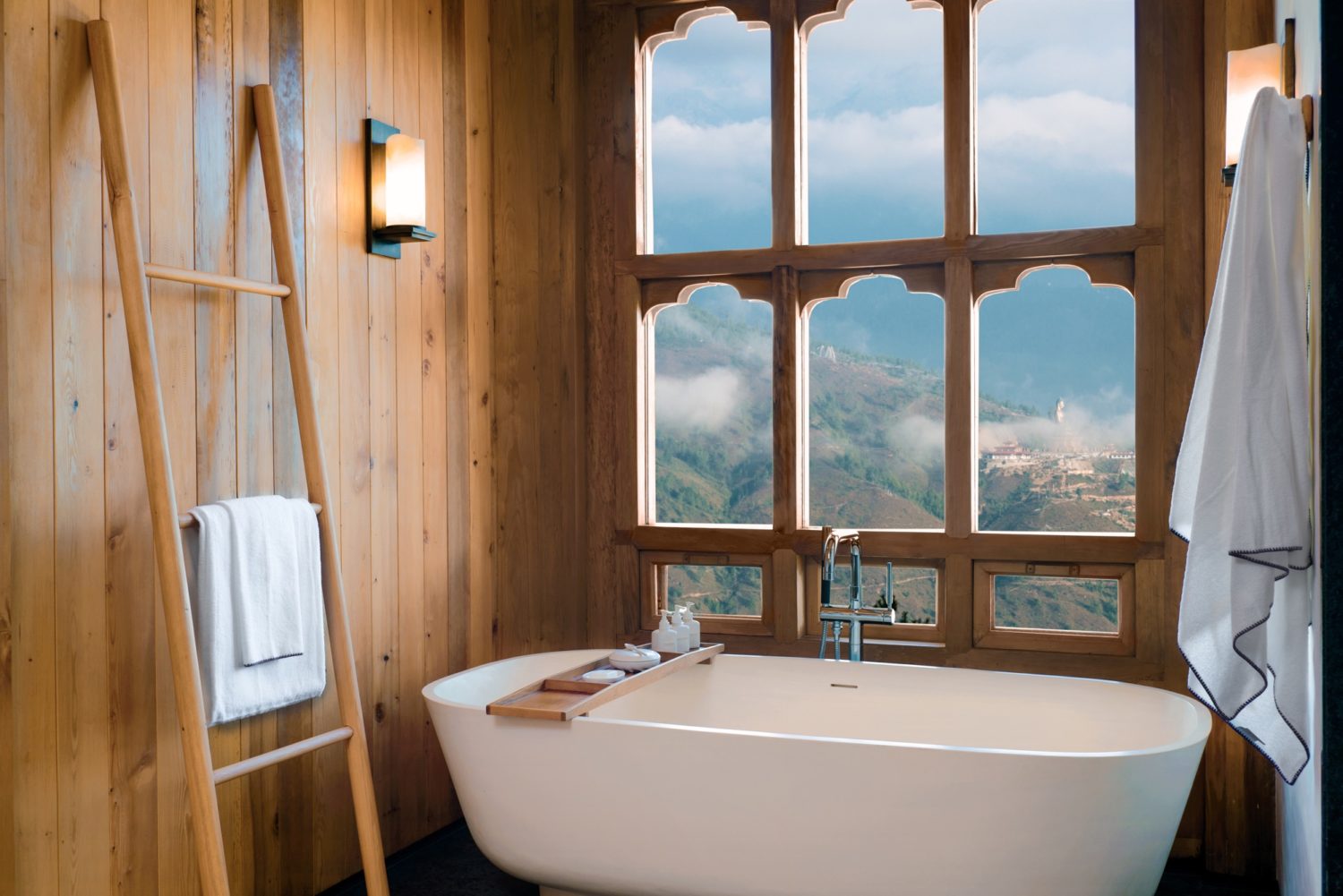
Where to stay in Thimphu
Another vertiginous view over the city can be had from Thimphu’s Six Senses Bhutan hotel. The main buildings and lodges positioned up the hillside dream over a panorama of snow-covered peaks and the cloud-swathed valley – also surreally reflected in the outdoor infinity pool. With wellness at the heart of its philosophy, Six Senses coddles its guests with warming ginger tea on arrival, padded slipper boots and hot water bottles at turndown.
Among the spa treatments are a jet lag massage and a Bhutanese scrub with herbs that re-energise or fight nausea. At breakfast, guests are served potent health shots of fermented onion and garlic.
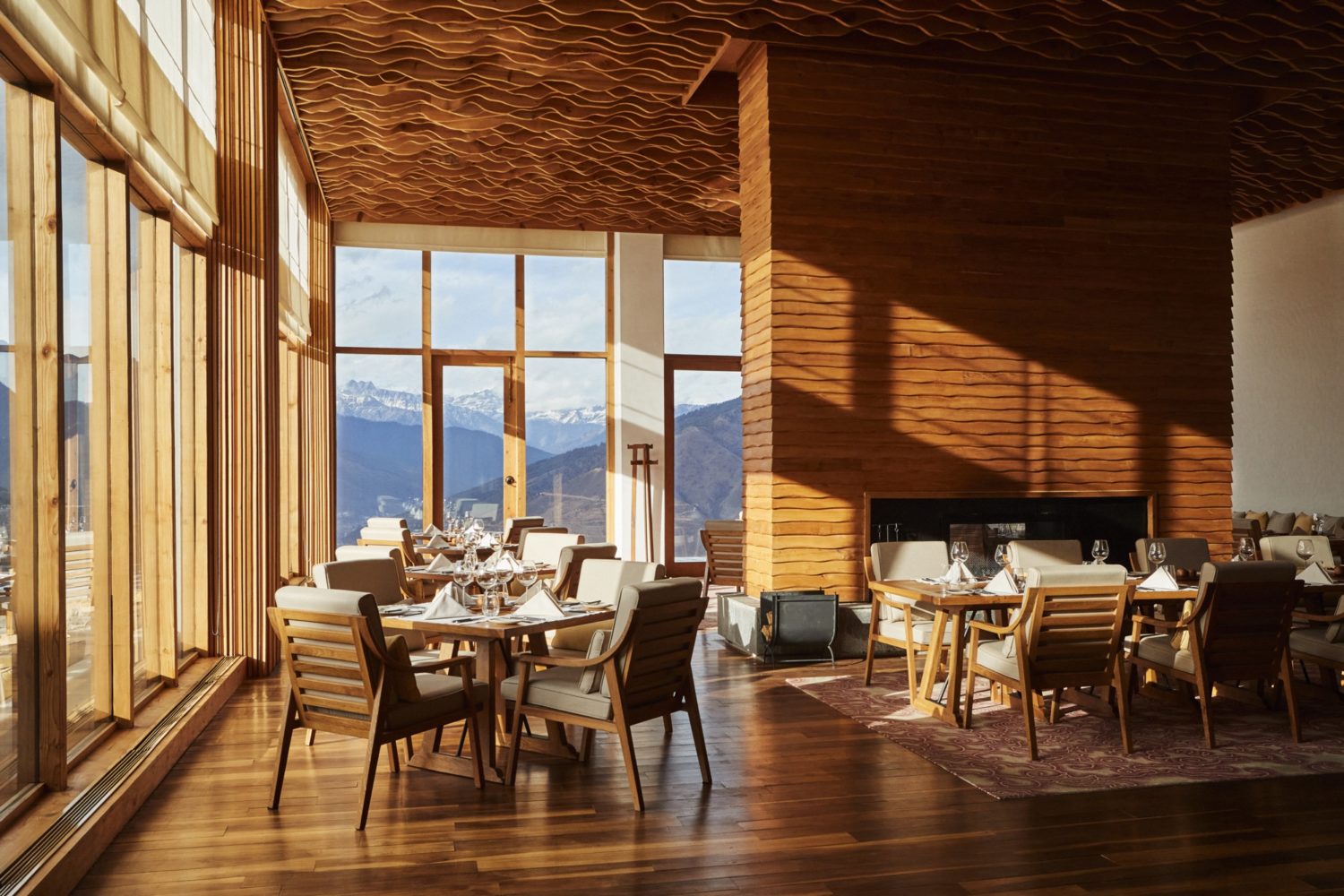
Punakha: Western Bhutan’s fertile valley
In spring, when high-lying Thimphu and Paro are still chilly with black mountainsides flecked by snow, Punakha valley is already blooming with flowers and fresh green shoots. A one-hour walk through rice paddies leads up to the Khamsum Yulley Namgyal Chorten with a wisteria tree cascading over the entranceway. Built by the Queen Mother, the four floors of shrines are dedicated to gods in their wrathful forms with wild, menacing faces, skull-bedecked headdresses and flaming aureolas.
Two rivers traverse the valley which converge at the monumental Punakha Dzong. A steep stone and wood staircase gives access to what is Bhutan’s largest and second-oldest fortress. Three open, breezy courtyards lead to a hall-like shrine with three behemoth deity sculptures on the altar.

The Chimi Lhakhang temple also lies in the valley. Built at the end of the 15th century, it is dedicated to the Divine Madman and his unorthodox spiritual practices using his ‘magic thunderbolt of wisdom’. The fertility temple contains phallic symbols and sculptures, and a wooden phallus with a silver handle is used to bless visitors, particularly women hoping to become pregnant.
Punakha’s fertile hillside ripples with terraces for growing chilli peppers and red rice, the fundamentals of Bhutanese cuisine. At roadside restaurants like Merengma Bistro, dig into spreads of yak meat casserole, buttery pumpkin soup, punchy ginger chicken stew, melt-in-the-mouth aubergines and the most iconic dish ema datshi (whole chillis, onions and garlic smothered in melted cheese).

Where to stay in Punakha
The so-called valley of the stars welcomed yet another five-star property at the end of last year. At Pemako Punakha, guests arrive at a wooden footbridge over the river where their personal butlers await. On the other side are golf buggies that are the main mode of transport around the 70-acre property.
The hotel is named after the mythical beyul Pemako in the Himalayas. Access to this hidden lotus land is via a waterfall, which the hotel recreates beside the entranceway. Guests receive a welcome prayer and blessing from the resident lama and are served traditional Highlander butter tea in the lobby. Designed by archistar Bill Bensley, the main structure is a homage to temple architecture and Bhutanese spiritualism. There is a miniature gilded stupa shine before the reception desk and plaster masks of the snow lion, tiger, dragon and garuda bird that are used in sacred dances.

The rooms inside semi-tented structures are dispersed throughout the densely wooded hillside. The Highlander theme continues with fluffy miniature yaks, a warrior headdress and a sword as decoration. In a black and orange colour palette, there is a giant bed, tasselled lamps and a lounge area. The bathroom features underfloor heating and a vintage copper tub. Outside, a wide patio with a panorama of pines and mountain tops is decked out with loungers and a heated pool.
How to get to Bhutan
The easiest way to get to Bhutan is by flying to Delhi airport and then on to Paro with national airlines Bhutan Airways and Drukair. To break up the long journey, spend a night in New Delhi’s Leela Palace, a sumptuous structure of gilded halls, silken upholstery and a flower-filled garden. Sooth journey-frayed nerves with a swim in the rooftop pool and a cocktail in the award-winning Library Bar. If you want the complex admin and booking process taken off your hands, Audley Travel can organise a nine-day tailormade itinerary from £9,450 per person (based on two travelling).
Satsam Chorten, Paro, Bhutan
Chang Gewog, Chunimeding, Babesa, Thimphu, Bhutan
Punakha, Bhutan
Words by Rebecca Ann Hughes







